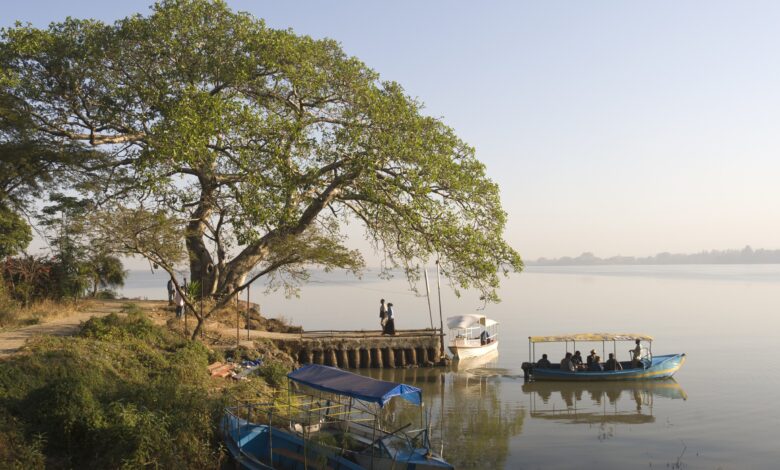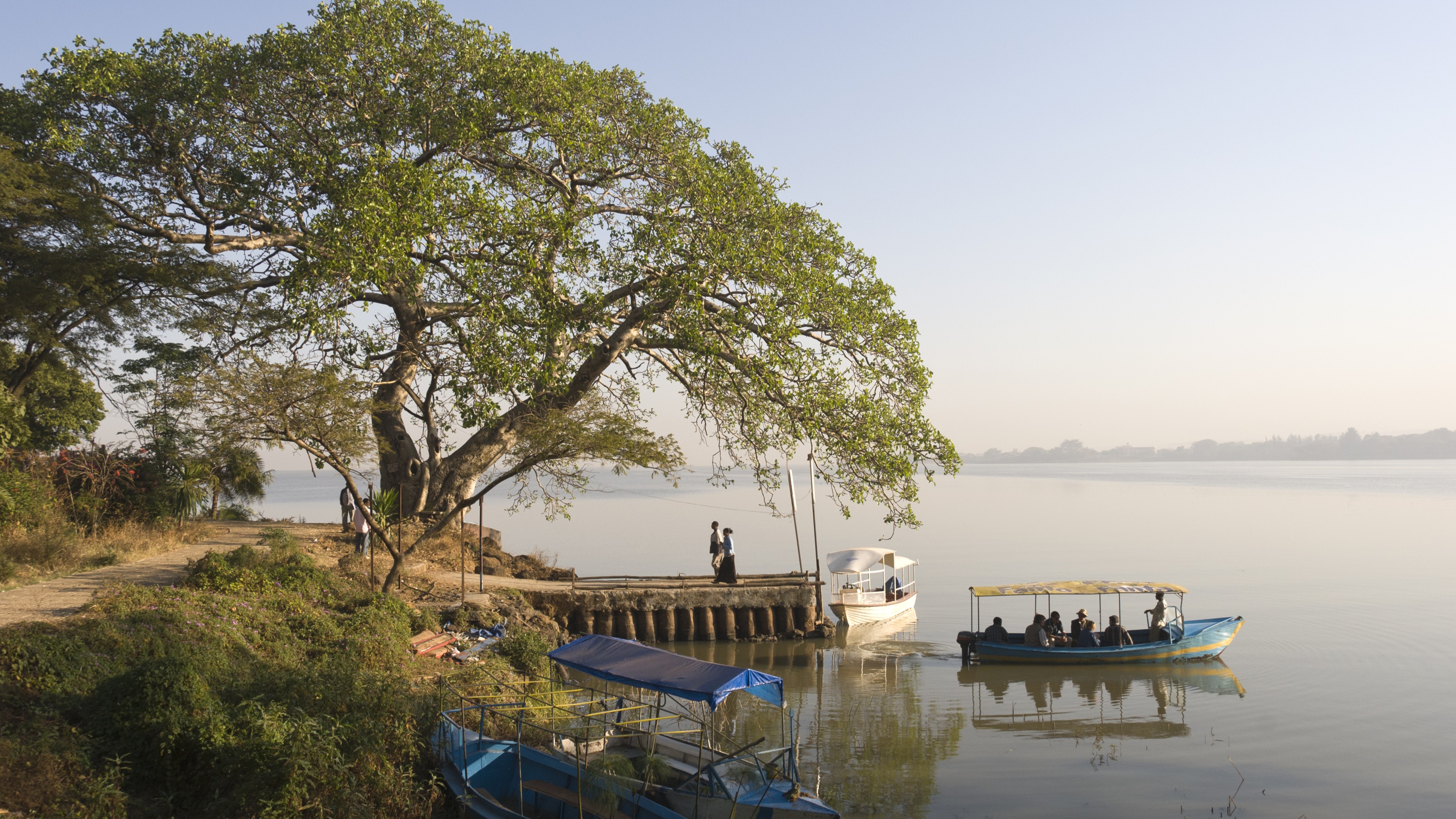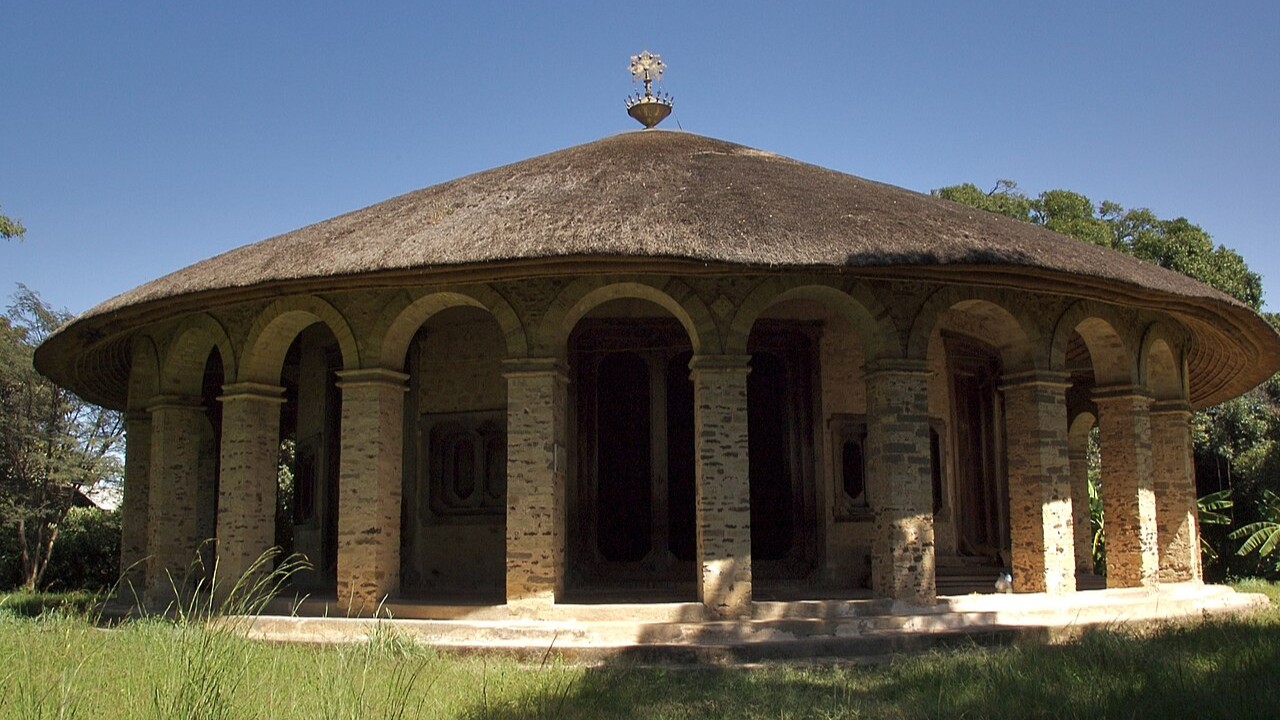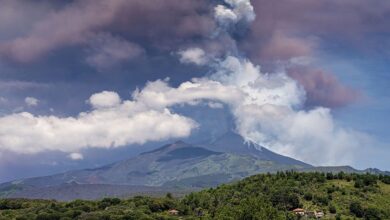Pair of ‘holy’ islands in eerily green African lake hold centuries-old relics and mummified emperors — Earth from space

QUICK FACTS
Where is it? Dek and Daga, Ethiopia [11.907552854, 37.285011102]
What’s in the photo? A pair of islands in the middle of the green-colored Lake Tana
Who took the photo? An unnamed astronaut onboard the International Space Station
When was it taken? Jan. 2, 2017
This intriguing astronaut photo shows a pair of islands in the murky green waters of a major African lake. Both landmasses are home to monasteries that hold important religious relics, including the remains of several ancient emperors.
The two islands, named Dek and Daga, are located within Ethiopia’s largest body of water, Lake Tana, which has an average surface area of around 1,200 square miles (3,100 square kilometers) — around the same size as Rhode Island. The lake, which is listed as a UNESCO biosphere reserve, is located in the Ethiopian Highlands, around 5,800 feet (1,770 meters) above sea level, and has a maximum depth of around 50 feet (15 m).
Lake Tana was formed around 5 million years ago when volcanic activity dammed a group of ancient rivers. It is now the major source of the Blue Nile — a 900-mile-long (1,450 kilometers) tributary of the Nile River that flows through Ethiopia and Sudan.
Dek, the larger of the two islands, measures around 4.5 miles (7.5 km) across at its widest point and has a population of around 5,000 people, while Daga has a maximum width of around 1 mile (1.6 km) and is not permanently inhabited.
When viewed from above, the islands stand out against the lake’s insipid milky-green coloring, which is the result of algal blooms that thrive off nutrients from agricultural runoff and wastewater, according to NASA’s Earth Observatory.
Related: See all the best images of Earth from space

Dek is an agricultural hotspot thanks to its nutrient-rich volcanic soils and high rainfall, which is due to its location in the Intertropical Convergence Zone — a low-pressure belt near the equator that experiences frequent thunderstorms. Most of the island’s surface has been transformed into agricultural fields, which appear light brown and red when viewed from above. Their main crops are corn, millet, coffee and mangos.
In the photo, a bright orange lake is situated towards Dek’s southeastern corner. It is unclear exactly what gives this lake its vibrant hues, but it is also likely tied to agricultural runoff, according to the Earth Observatory.
However, the two islands’ most interesting sites are probably their monasteries, which cannot be easily seen from space.
Holy relics
Experts believe that there is at least one church or monastery on more than half of the 30 or more islands within Lake Tana (the total number of islands within the lake is disputed because some only appear during the rainy season, when the lake expands). These religious sites were created, in part, to protect Ethiopia’s most valuable relics and treasures during times of war, according to the Earth Observatory.

Dek is home to at least five churches, as well as the 18th-century Narga Selassie monastery, which is filled with stunning paintings of Ethiopian history. However, Daga is arguably home to a more important monastery, named Daga Estifanos or “St. Stephen of Daga,” which dates to the 13th century.
The mummified remains of at least five Ethiopian emperors — who ruled the country at various points from between 1270 and 1730 — are kept at Daga Estifanos, and are each displayed for tourists in special glass-sided coffins, alongside crowns, scrolls and other artifacts from their reigns, according to the Lake Tana Biosphere Reserve website.
But, due to local customs, only men are allowed to visit Daga and its monastery. In fact, the local “no females” rule is even applied to farm animals.
Other major religious sites in Lake Tana include Tana Cherkos, an island populated exclusively by monks from the Ethiopian Church. The Ark of the Covenant was supposedly kept there for around 800 years, sometime after it was stolen from Jerusalem and before being moved to the Ethiopian mainland, according to the Lake Tana website.
Source link




